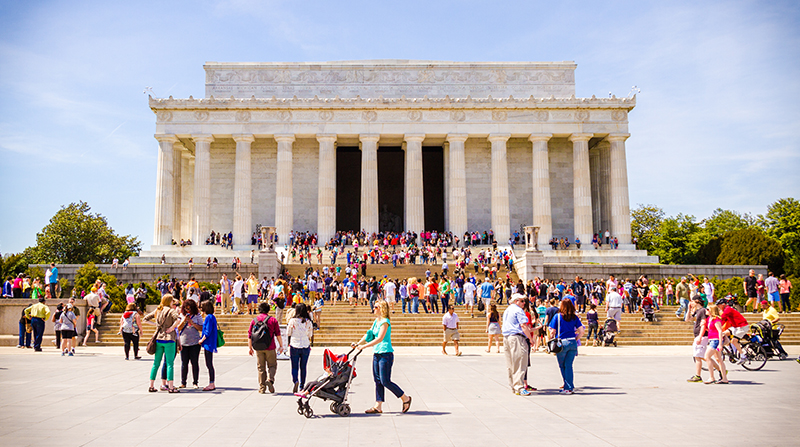
A metropolis unlike any other, Washington, D.C. has managed to merge the hustle and bustle of other northern cities with the appealing small-town feel of the South. You could visit year after year and never see all the city has to offer — between its more than 70 museums, the White House and Capitol building, multiple colleges and vibrant neighborhoods, the U.S. capital has earned a reputation as a bona fide melting pot.
Here’s what you need to know before making your way to Capitol Hill.
The best time to visit Washington, D.C.
When the city’s flower boxes and front yards overflow with tulips, daffodils and daisies, and the cherry blossoms are in full bloom, D.C. has a distinct feel apart from any other big city. Spring weather usually hits the upper 60s and low 70s, with lots of sunshine and low humidity, making for a pleasant atmosphere around many of the outdoor monuments.
Summer brings millions of tourists, since kids are out of school and parents are drawn to the numerous free activities available in the nation’s capital. However, June, July and August can be oppressively hot with temperatures reaching above 90 degrees Fahrenheit, so its best to plan your trip around the warmer months.
What to pack for a trip to Washington, D.C.
Despite its Mid-Atlantic location, D.C. has climate swings, experiencing average temperatures in the high 80s in July and August, with cold spells that dip to the 30s during January and February. With that in mind, be sure to pack airy clothes during the summer months and warm boots in the winter.
You’ll want to remember comfortable shoes, as Washington is a highly walkable city, and historic areas like Georgetown and Capitol Hill have brick or cobblestone streets that can wreak havoc on high heels.
Dress for most museums and monuments is casual, but many of Washington’s restaurants cater to the business traveler. While jackets and ties aren’t necessary, a business-casual look for dinner is appropriate for most restaurants.
You’ll want to bring along your camera as well to capture many of the East Coast’s finest and most iconic views.
Public transportation in Washington, D.C.
Washington has some of the nation’s best public transportation. Within the city proper, the easiest way to get around is via the Metro system. It can be a quick alternative to driving when the city is gridlocked or streets are closed for D.C.’s innumerable protests, parades and pickets. The subway goes into Maryland and Virginia, so it’s a great option even if you’re out in the suburbs.
If your destination isn’t Metro accessible, catch a cab — Washington’s bus system can be slow and service can be spotty, often off schedule by more than 10 minutes. Taxis recently changed to a straightforward meter system to calculate charges, banishing D.C.’s confusing zone system. And there’s always Uber or Lyft.
If you’re downtown when it’s warm, look for the rickshaw bike riders — they’ll tow you in a wooden cart with a seat for two for about the cost of a cab.
